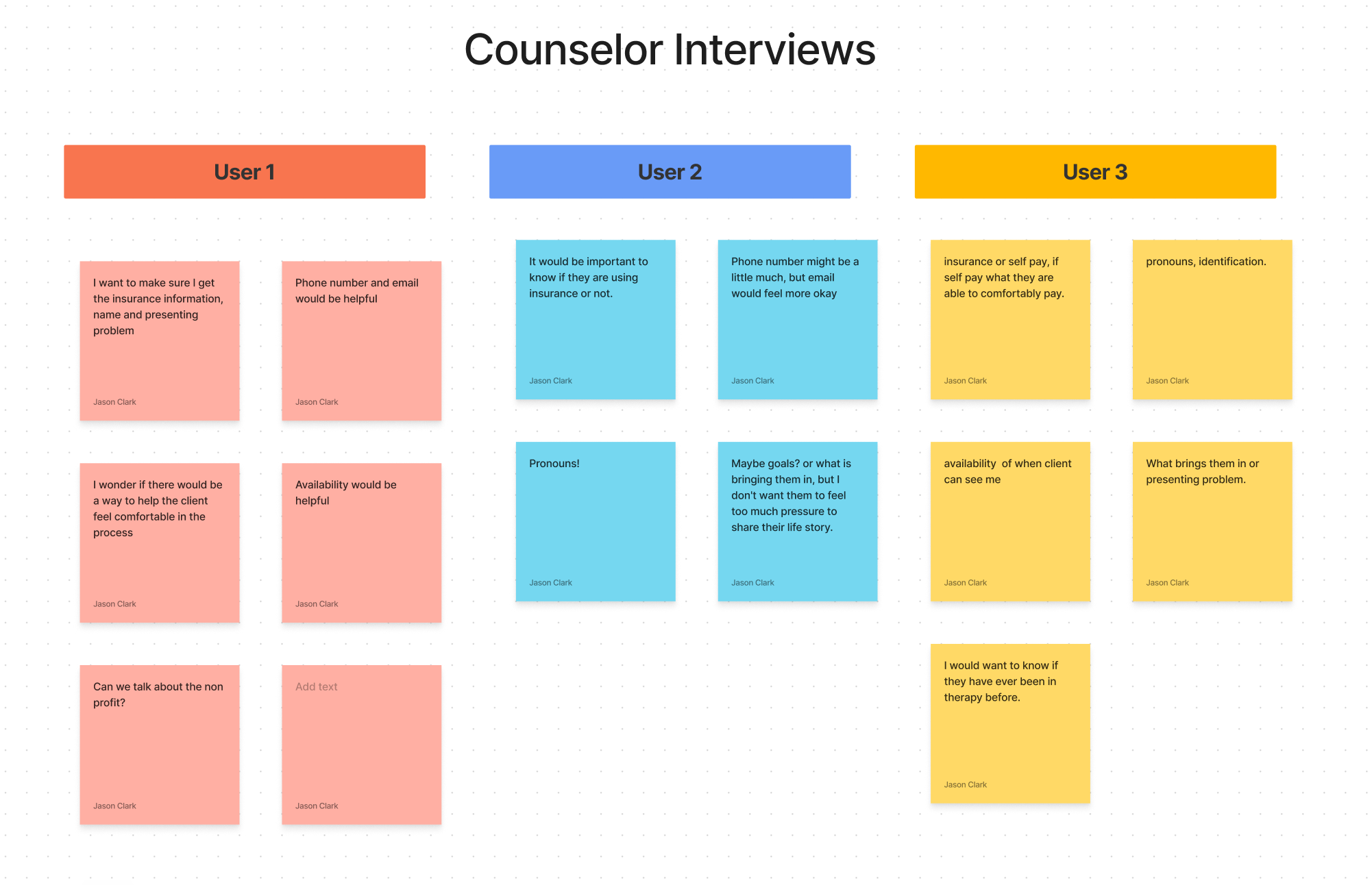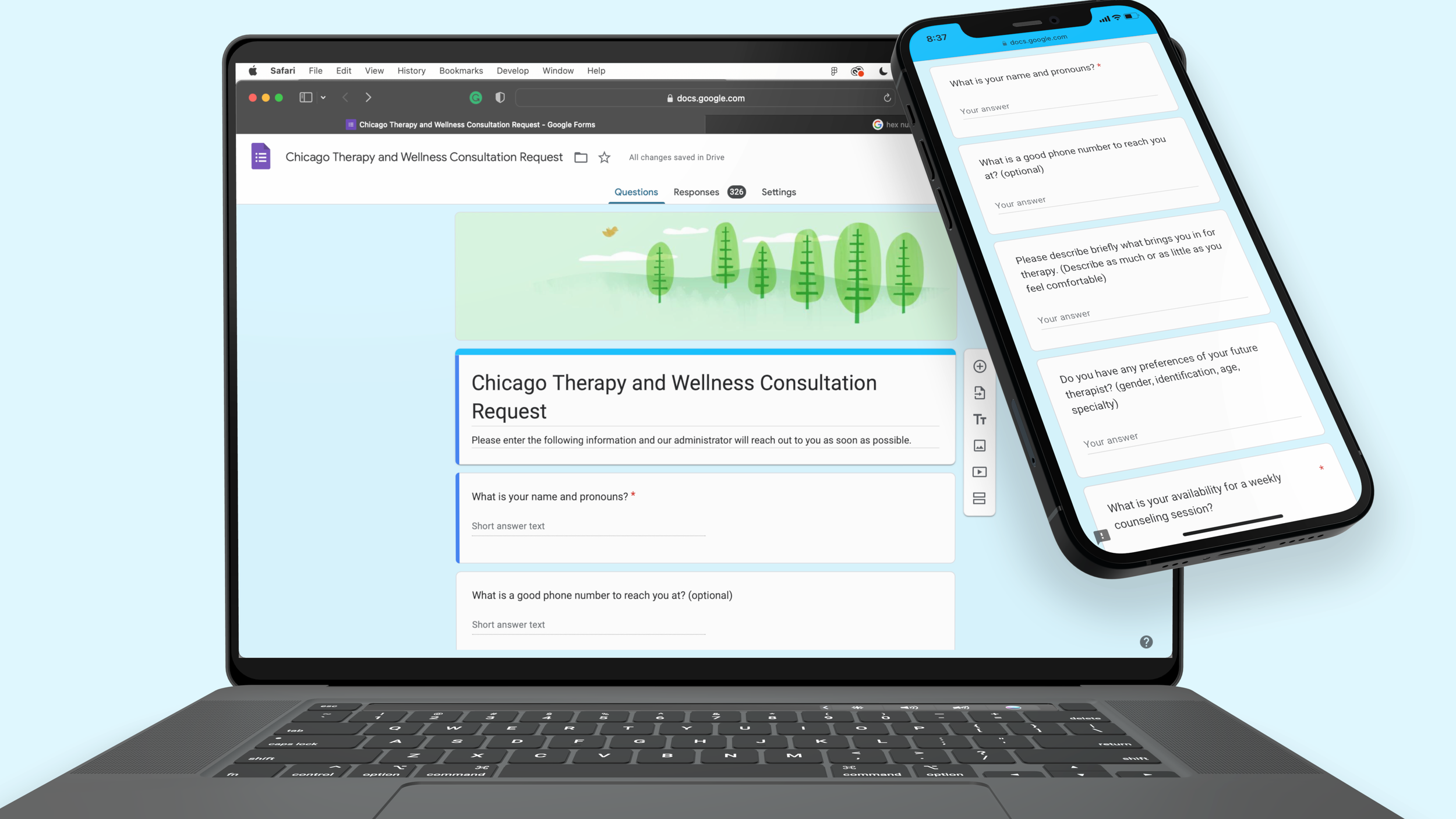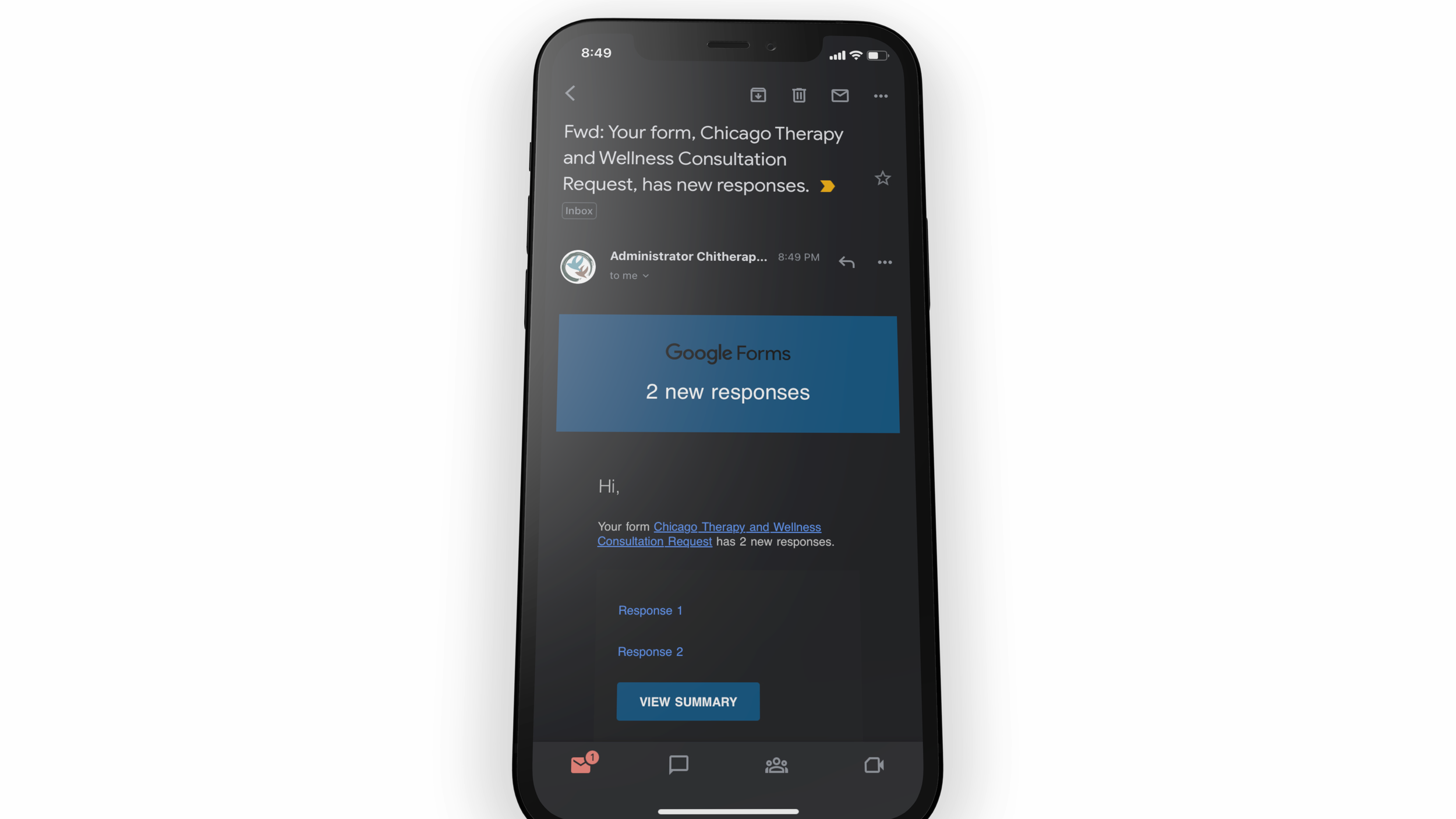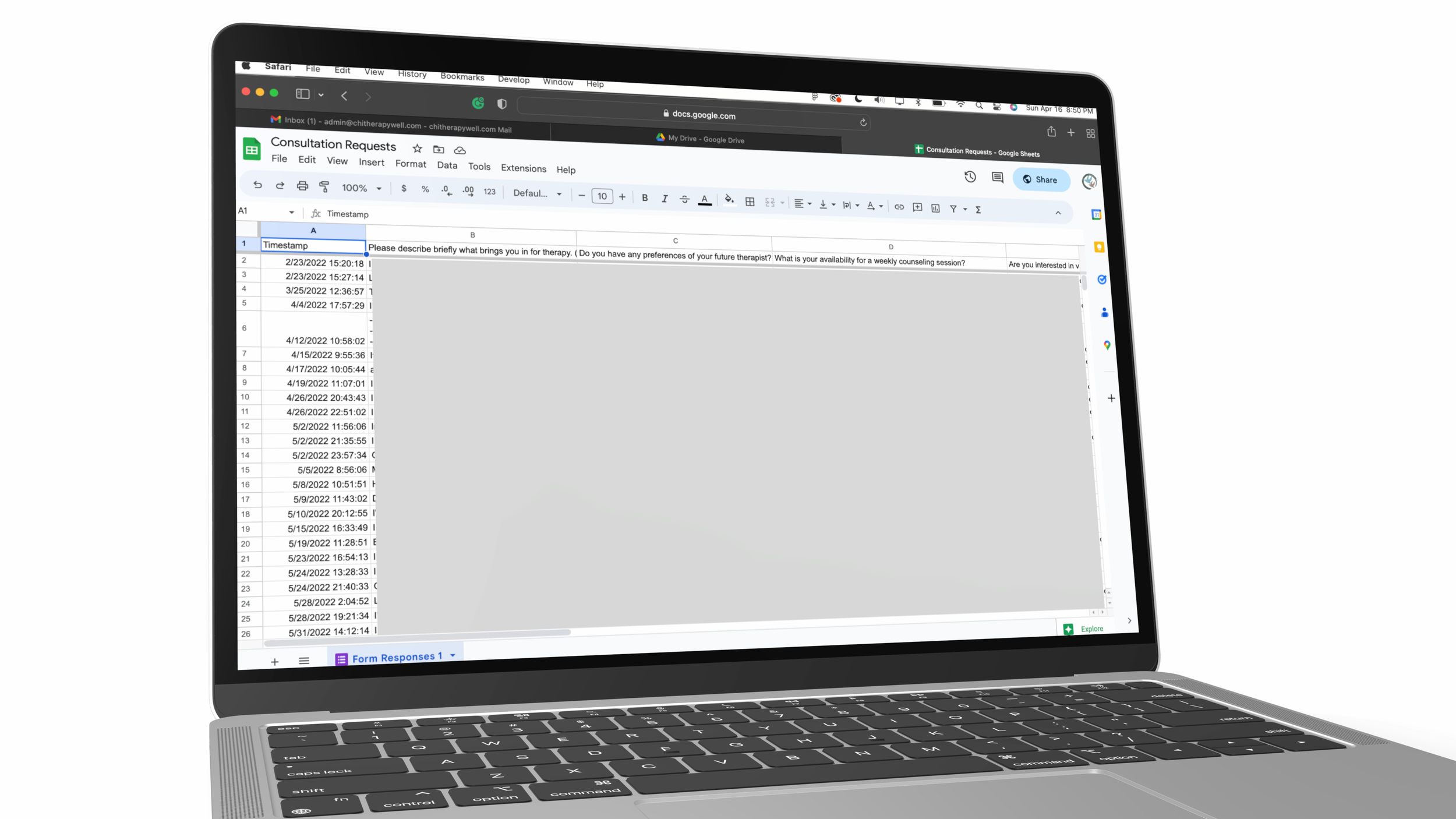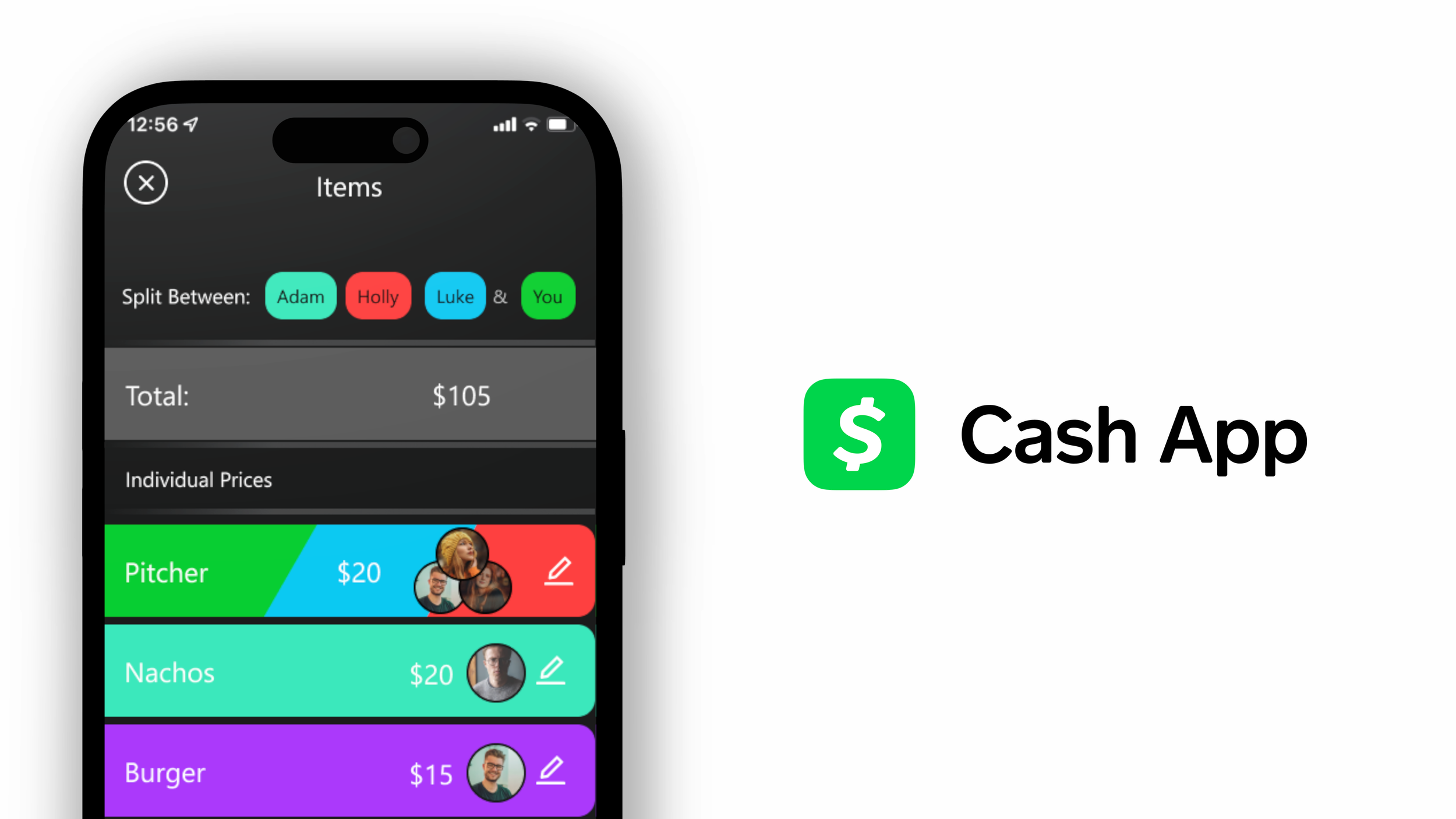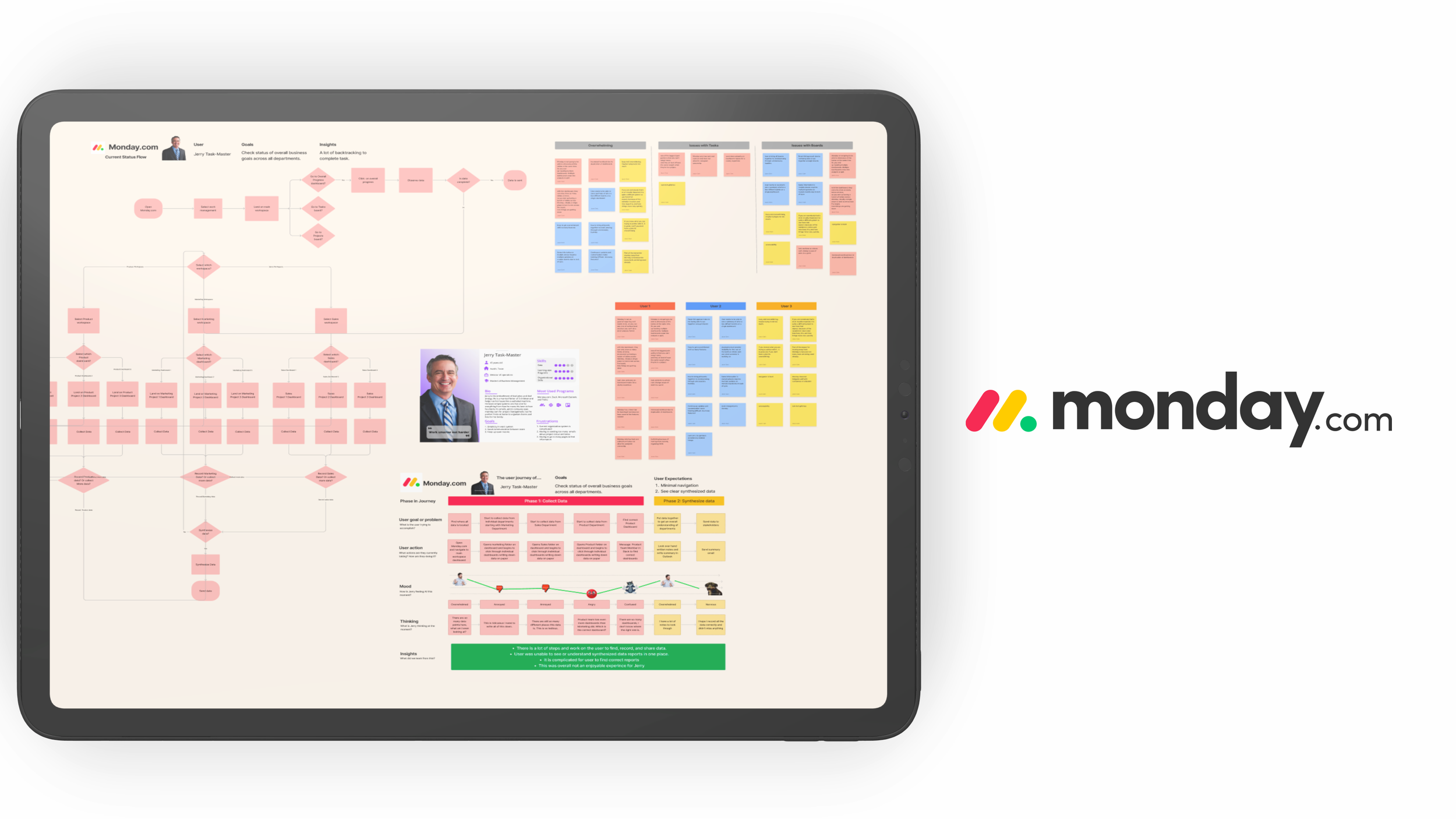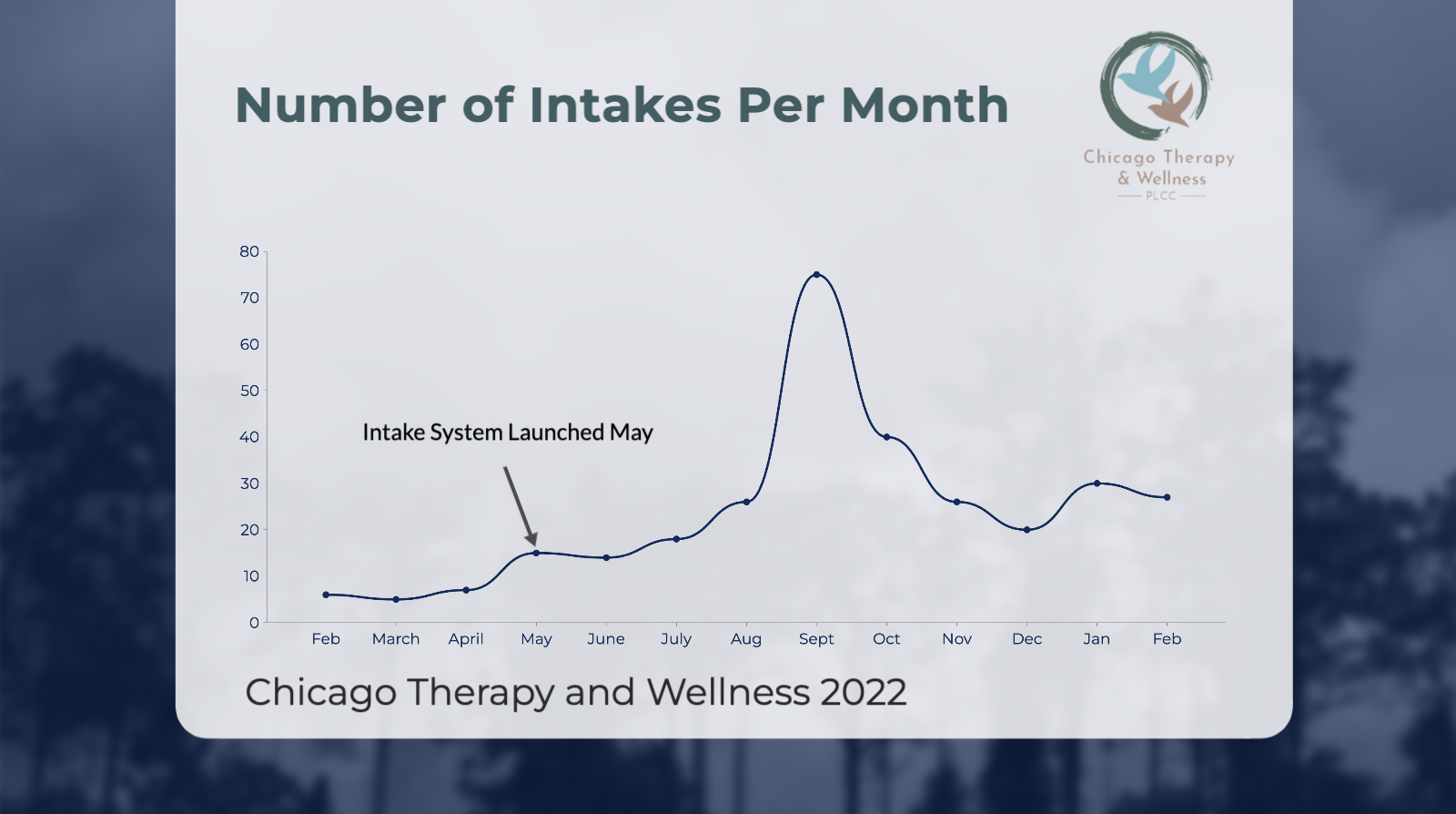
Increasing Intakes for a Mental Health Private Practice by 320%
My Role
UX Researcher
UX Designer
Tools
Figma
Google Workspace
Platform
Customizable web and mobile applications.
Introduction
Chicago Therapy and Wellness is a recently established private practice that specializes in mental health. They sought my assistance in developing an intake system that could enhance patient acquisition. The client expressed their technological limitations and preferred that the system be integrated into their existing online infrastructure, as they were reluctant to adopt a new program. Therefore, I constructed the intake system within their Google Workspace system, allowing them to seamlessly manage patient intakes.
My Role
UX Researcher
User Interviews
Survey Development
UX Designer
Developed UX Flow
Idetated and designed intake system
Problem
What are the specific questions that a therapist and a client need answered before meeting in order to feel comfortable starting a therapeutic relationship?
As I started to think about the intake form, I recognized that it needed to serve a dual purpose. On the one hand, it must provide therapists with all the essential information to conduct a thorough intake. On the other hand, it should be designed in a manner that fosters patient ease and develops trust in the practice.
Goal
Create a comprehensive form that collects all the necessary information for therapists to conduct a thorough intake, while also ensuring that the form is designed in a way that puts patients at ease and inspires trust in the practice.
Impact
Patient intake requests jumped from averaging 8.25 client intakes a month to a week to averaging 34.6 a month resulting in a 320% increase in intakes. This data was retrieved from the average intake requests from 4 months before the launch of the system compared to the intake requests 4 months after the launch of the system.
Data Considerations
In September, there was a significant increase in intakes, and even after removing the outlier, the positive impact of the intake system persisted. With September removed, the monthly average intake increased from 8 before the launch of the intake system to approximately 30, demonstrating a remarkable 272% increase in the average number of monthly intakes even with September removed.
Research
Approach
I needed to understand what questions were important for therapists to be on the intake form and which questions puts patients at ease and inspires trust in the practice. I conducted several user interviews of therapists at the practice and of potiential new clients.
Counselor Interviews
After interviewing three counselors at Chicago Therapy and Wellness, I compiled their answers in an affinity map.
When it came to what questions were important to counselors they wanted to know, presenting problems, name, insurance, and availability.
“It would be important to me to know if they are using insurance or not so I can ensure I can take the client’s insurance because I only have so many self-pay slots.”
“I would want to know names and pronouns. I feel like asking someone those questions will help gain rapport with the client when I see them because I am not misnaming or deadnaming them.”
I conducted some field interviews and wanted to know what was important for potential patients for their therapists to know before seeing them for the first time.
The main things that were important for clients were a counselor's gender, age, specialty, and identification. Potential LGBTQ clients and clients of color I talked to said it was important that they get the feeling that the practice cares about social justice in their intake and that it won’t be brushed over.
Ideation
Google Workspace Integration
I went into Google Forms and created a setup where the answers to the questions will go right to an organized Google Sheets page. This way, the counselors will just have to look at the sheet and minimal interaction is needed on the user’s end. I set up notifications for whenever someone completes the form so the administrator knows to look at the sheet. Using the data I got from the interviews, I created 8 questions and added them to the Google Form and Google Sheets.
Due to patient confidentiality and HIPPA regulations, I cannot show the whole form but these are example intakes.
Ideal Flow for Counselors
The optimal flow is designed to provide users with the necessary information in a single click, simplifying their decision-making process to either call or email the client. Furthermore, this entire system is integrated within Google Workspace, a familiar platform that enhances the user's comfort and ease of use.
Final Design
Conclusion
Through the implementation of a streamlined intake system, integrated within Google Workspace, Chicago Therapy and Wellness was able to achieve a remarkable increase in patient intakes. The optimized system, designed to provide users with the necessary information in a single click, facilitated decision-making and resulted in a 320% increase in the average number of intakes per month. The integration of the system within Google Workspace enhanced user comfort and ease of use. Additionally, the intake system was designed based on research that incorporated feedback from potential clients, ensuring that it met their needs and preferences. Ultimately, this case study demonstrates the value of optimizing intake systems and utilizing familiar platforms, while also incorporating user feedback, to improve patient outcomes.
See More
Research & design a way to display sustainability data in an effective way that builds user trust ↗
Research & design a feature for customers to divide payments with others ↗
Research how Monday.com might improve the ease of use and reduce the learning curve of their platform. ↗

